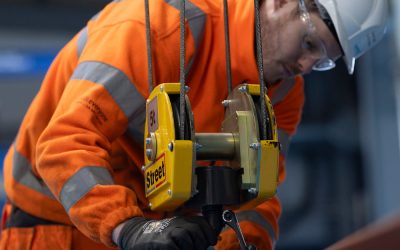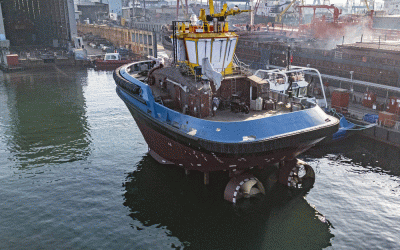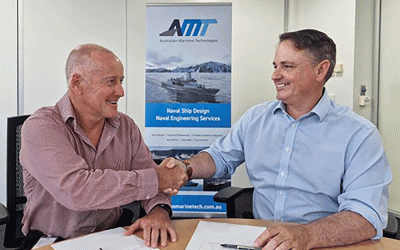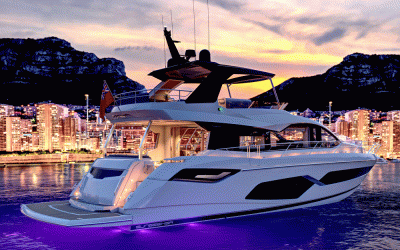An energy-absorbing, impact-mitigating material originally developed for runners, and subsequently proven within international warzones, is helping to contribute to the marine sector’s ongoing efforts to counter whole body vibration (WBV). Developed and manufactured by SKYDEX, the material has been formulated to reduce the transmission of vibrations more effectively than is possible with foam and rubber.
Founded in 2001, the Colorado-based company’s first mission was to develop a shock-mitigating solution for Nike running shoes, to protect athletes from potential injuries caused by exposure to repeated shocks and the repetitive stress of footfalls. The material was later adopted by the US Army for its operations in Iraq and Afghanistan, where its ability to absorb more than 85% of the impact of a blast made it a godsend for troops exposed to regular IEDs – and which saw it incorporated into the protective plates of the body armour donned by bomb disposal squads.
However, the objectives of the material when applied as a boat decking solution are closer to those of the running track than the battlefield. As with those professionals pounding the track, seafarers are more likely to encounter repetitive shocks over a significant period than one-off violent impacts. The effects of unchecked long-term WBV can prove severely debilitating: for instance, the technical report A Survey of Self-Reported Injuries Among Special Boat Operators, commissioned by the US Naval Health Research Center, recorded that lower back, knee and shoulder injuries were most common, though health problems can also extend to loss of hand-eye coordination, degenerative disc disease and gastrointestinal disorders.
SKYDEX is staffed by a team of mechanical and biomechanical engineers and has its own test lab on site to assist with the R&D of new products. Alvaro Vaselli, president and CEO, tells Ship & Boat International that there are two key variables when developing and applying a shock-mitigating material for the marine sector. “The first is the material we use, including its thickness and hardness,” he says. SKYDEX creates its solutions from thin sheets of high-grade, engineered polymers, incorporating materials such as thermoplastic urethane.
The second variable is related to the specific geometries of the solution. Each application demands its own unique geometry; one that shields armed forces from roadside car-bombs may not be best suited to a decade’s worth of exposure to wave slamming. This makes it important for customers to communicate their specific operational requirements (including typical boat speeds, operational location(s) and weather and wave conditions) before ordering the solution, whether for a newbuild or a retrofit.
The geometries are critical to the energy absorption. The material is cut to fit the deck of the boat or, alternatively, deck fittings, hatches, equipment and the areas between seats and consoles. As well as testing the material for its impact-absorbing qualities – including drop tower tests – the test lab will commonly validate the material’s flammability, solar radiation, UV exposure, saltwater erosion and chemical/fungal resistance.
Installing shock-mitigating seating aboard vessels, particularly high-speed craft, is one way of tackling WBV – but, Vaselli points out, there are plenty of medium-/low-speed workboats, fishing boats and offshore vessels where crew may spend hours on their feet, subject to unnoticed vibrations, however minor, throughout the working day. As such, SKYDEX has used the material to produce decking solutions for small-to-medium sized boats, so that crew without access to shock-mitigating seats can still receive some degree of protection from repeated exposure. The group estimates that its boat decking could absorb 60% more force than conventional foam-cushioned decking, while also avoiding potential degradation of said foam by exposure to seawater.
At the same time, use of the material need not be restricted to high-speed applications, or risk of injury. While SKYDEX has forged close relationships with the military, patrol and rescue sectors, covering more than 8,000 craft globally, Vaselli reveals that the company is also noting interest from the recreational and leisure boat markets. “The material could be installed below the deck of a yacht, for example – more for the purpose of comfort than protection for the owner, guests and crew,” he says.





